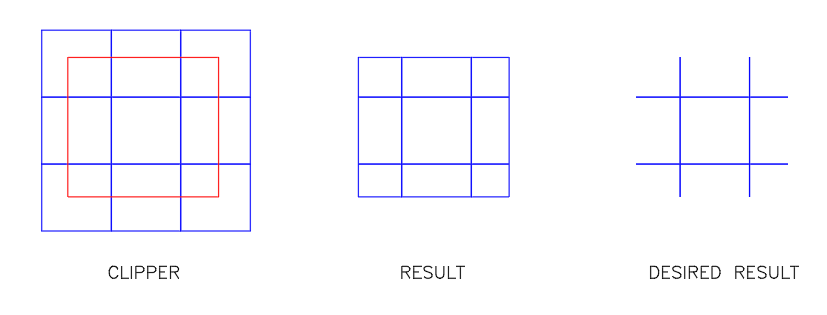Hi all,
I have an "issue" that is frustrating me to no end (probably because the answer is more simple than I'm making it), so I thought I'd run it by the community.
I have a workbench where I am taking AGOL features and converting them to a dwg. The AGOL geometry that is giving me issues are the AGOL polygons after they are sent through a CLIPPER:

I understand why the 'RESULT' is passed through the CLIPPER and spit out as polygons still. And I have them also going through a GEOMETRY COERCER (to fme_line) and even a LINE ON LINE OVERLAYER -- all good to this point.
What I cannot figure out is how to remove the unwanted lines to obtain the "DESIRED RESULT", which would just be lines once they get into AutoCAD. There doesn't seem to be an attribute that I can use to differentiate whether the line came from the original polygon or if it is a result of the CLIPPER 'changing' the geometry (all geometry has the attribute "_clipped" as "yes").
These are similar to quarter sections, so obviously I would prefer not to have the clipped areas show up as closed in AutoCAD and give the user misleading boundaries.
Hoping someone can make me feel stupid because I've been staring at this for longer than I'd like.
Thank you!






